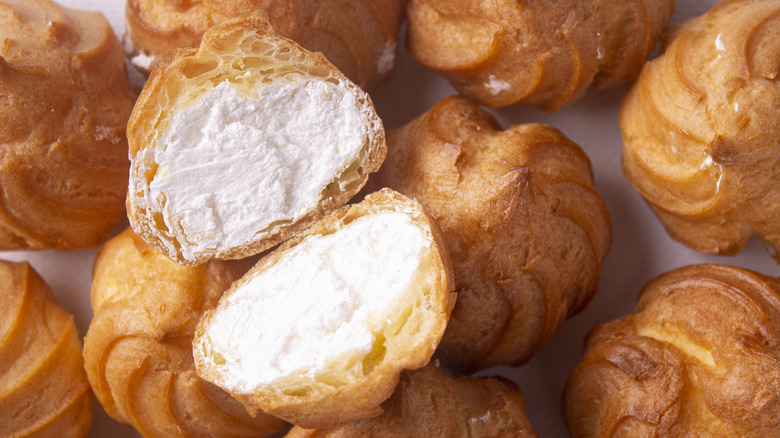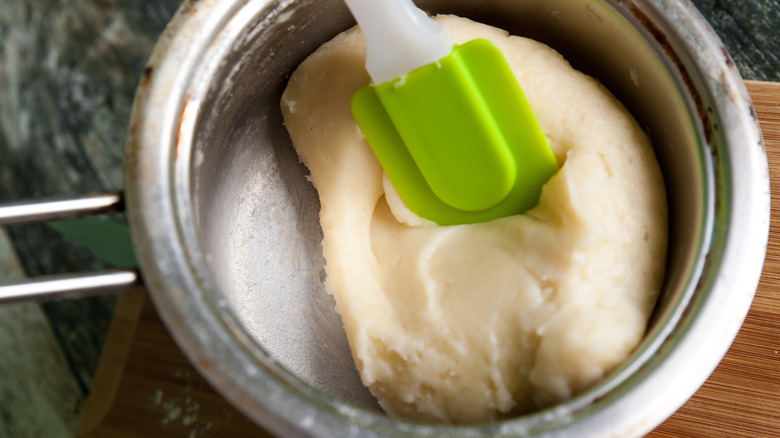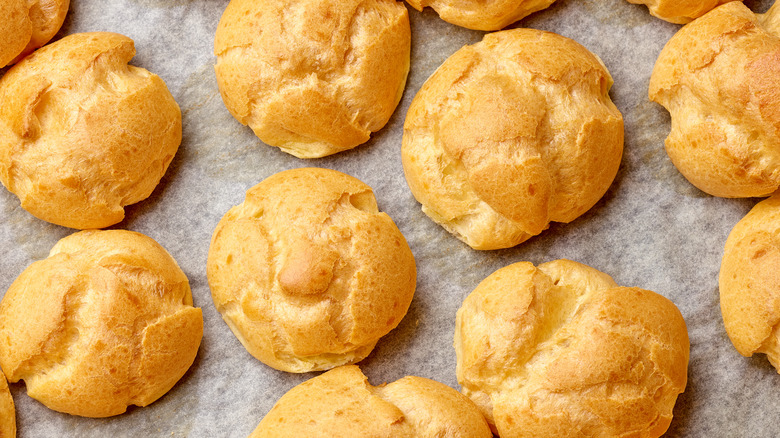The Step You Absolutely Cannot Skip When Making Cream Puffs
The cream puff is a classic dessert with a hazy history of Italian and French origin. But no matter where it truly came from, the cream puff's spongey, bready exterior and rich, creamy interior makes it a popular dessert across the globe. At times called profiteroles, these delicate treats simultaneously appear to be luxurious pastries and humble bite-sized buns. Whatever kind of cream or custard it's filled with, what really sets the cream puff apart is indeed its unique breading.
If you've ever had eclairs or gougères, you know these dishes are made of the same eggy pastry that cream puffs are made with. According to Sally's Baking Addiction, this particular dough is a pâte à choux — choux, which translates to "cabbage," refers to the appearance of the puffy pastry once it's cooked. Though simple in flavor and appearance, pâte à choux is a unique dough that requires a very attentive cook — and multiple meetings with heat.
Cook the dough twice
The Spruce Eats explains why cooking the dough once before it hits the oven is a necessary step: When flour is combined with this hot mixture, this changes the structure of the gluten and gelatinizes it. Unlike chewy, bouncy donut dough, the choux pastry's gluten molecules are altered so they stretch but do not fall back down. Institute of Culinary Education notes that cooking and stirring this dough is perhaps the most important part of making a proper choux pastry. Thus, once the bread is actually baked, the dough puffs and expands, but remains puffed due to the altered structure of the gluten molecules in the dough.
This scientific process is crucial to the structure of a cream puff, which is notably round, crisp, and hollow on the inside. But just because you combine your flour with heated butter and water doesn't mean your gluten formation will be strong enough. There are visual cues to look out for to ensure your cream puffs will be puffed when you take them out of the oven.
Be patient
The real trick to getting your perfect cream puff pastry shell is to cook the pastry dough long enough for it to transform into a dough with mashed potato-like texture, per The Flavor Bender.
But why do you have to let the butter and water come to a boil? Why cook the pastry dough until it becomes pasty? Well, you need to let some of the water evaporate before you add flour so that the dough isn't too wet. Indeed, the dough will become further hydrated and gelatinized while it cooks, even though it appears to be drying up (via Institute of Culinary Education). Once the dough is mixed thoroughly, eggs are added one at a time, per The Flavor Bender, which increases the moisture content. If you aren't patient with this crucial step, you'll end up with runny batter and a flat, soggy choux pastry. In fact, too much liquid can prevent the choux pastry from puffing up in the first place, leaving you with a limp would-be treat.
Make sure you cook off some of the excess liquid in your dough, and you'll have the perfect choux pastry for your cream puffs.


